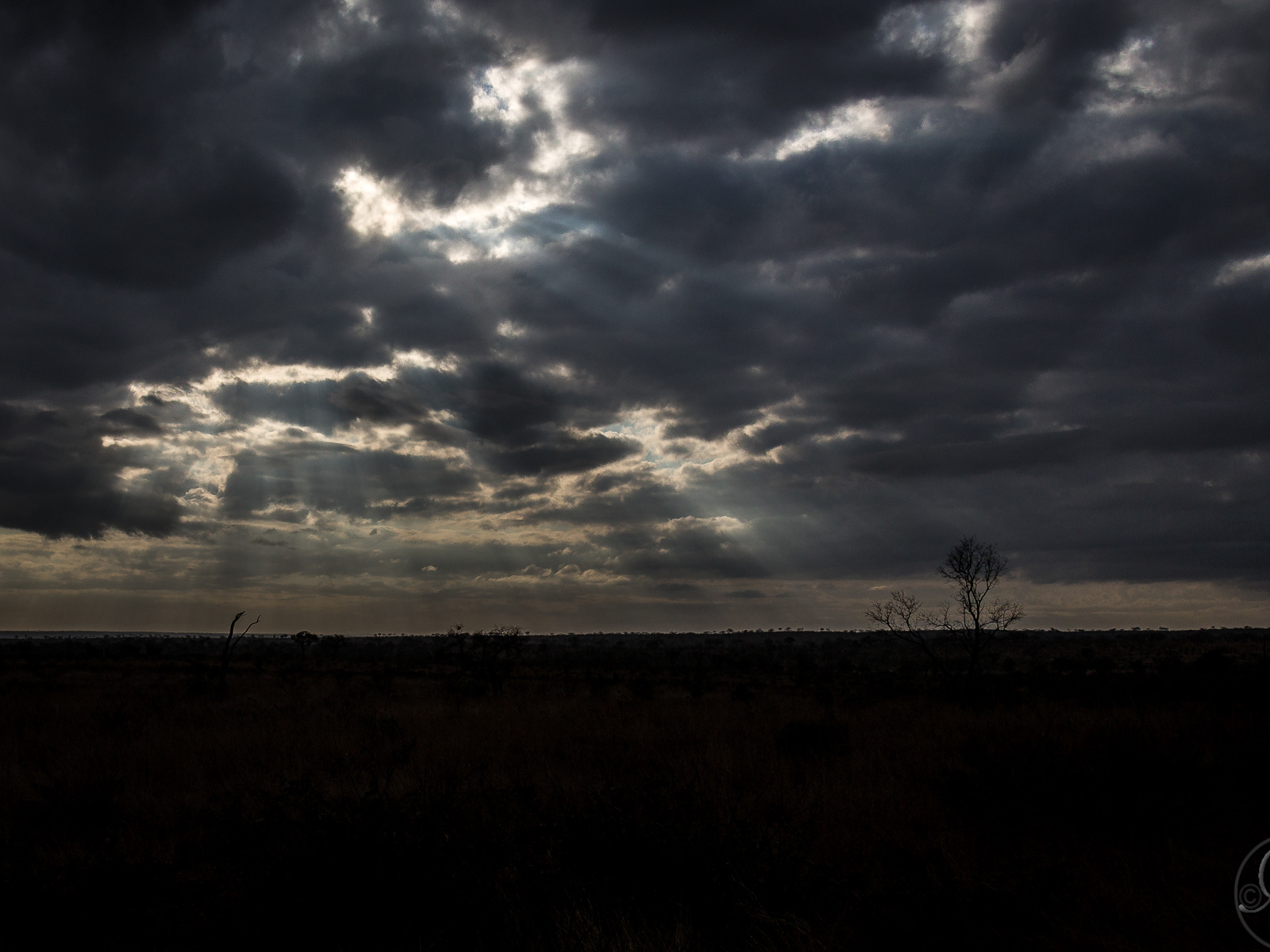TIGER
Tiger The tiger (Panthera tigris) is the largest cat species, reaching a total body length of up to 3.38 m (11.1 ft) over curves and exceptionally weighing up to 388.7 kg (857 lb) in the wild. Its most recognisable feature is a pattern of dark vertical stripes on reddish-orange fur with a lighter underside. The species is classified in the genus Panthera with the lion, leopard, jaguar and snow leopard. Tigers are apex predators, primarily preying on ungulates such as deer and bovids. They are territorial and generally solitary but social animals, often requiring large contiguous areas of habitat that support their prey requirements. This, coupled with the fact that they are indigenous to some of the more densely populated places on Earth, has caused significant conflicts with humans. Tigers once ranged widely across Asia, from Turkey in the west to the eastern coast of Russia. Over the past 100 years, they have lost 93% of their historic range, and have been extirpated from southwest and central Asia, from the islands of Java and Bali, and from large areas of Southeast and Eastern Asia. Today, they range from the Siberian taiga to open grasslands and tropical mangrove swamps. The remaining six tiger subspecies have been classified as endangered by IUCN. The global population in the wild is estimated to number between 3,062 and 3,948 individuals, down from around 100,000 at the start of the 20th century, with most remaining populations occurring in small pockets isolated from each other, of which about 2,000 exist on the Indian subcontinent. Major reasons for population decline include habitat destruction, habitat fragmentation and poaching. The extent of area occupied by tigers is estimated at less than 1,184,911 km2 (457,497 sq mi), a 41% decline from the area estimated in the mid-1990s. Tigers are among the most recognisable and popular of the world's charismatic megafauna. They have featured prominently in ancient mythology and folklore, and continue to be depicted in modern films and literature. They appear on many flags, coats of arms, and as mascots for sporting teams. The tiger is the national animal of Bangladesh, India, Vietnam, Malaysia and South Korea. Tigers have muscular bodies with powerful forelimbs, large heads and long tails. The pelage is dense and heavy; colouration varies between shades of orange and brown with white ventral areas and distinctive vertical black stripes, whose patterns are unique to each individual. Their function is likely for camouflage in vegetation such as long grass with strong vertical patterns of light and shade. The tiger is one of only a few striped cat species; it is not known why spotted patterns and rosettes are the more common camouflage pattern among felids. The tiger's stripes are also found on the skin, so that if it were to be shaved, its distinctive coat pattern would still be visible. They have a mane-like heavy growth of fur around the neck and jaws and long whiskers, especially in males. The pupils are circular with yellow irises. The small, rounded ears have a prominent white spot on the back, surrounded by black.[17] These false "eyespots", called ocelli, apparently play an important role in intraspecies communication. The skull is similar to that of the lion, though the frontal region is usually not as depressed or flattened, with a slightly longer postorbital region. The skull of a lion has broader nasal openings. However, due to variation in skulls of the two species, the structure of the lower jaw is a more reliable indicator of species. The tiger also has fairly stout teeth; the somewhat curved canines are the longest among living felids with a crown height of up to 90 mm (3.5 in). The oldest recorded captive tiger lived for 26 years. A wild specimen, having no natural predators, could in theory live to a comparable age. Tigers are the most variable in size of all big cats, much more so than lions.[58] The Bengal and Siberian subspecies are the tallest at the shoulder and thus considered the largest living felids, ranking with the extinct Caspian tiger among the biggest that ever existed. An average adult male tiger from Northern India or Siberia outweighs an average adult male lion by around 45.5 kg (100 lb).[58] Males vary in total length from 250 to 390 cm (98 to 154 in) and weigh between 90 to 306 kg (198 to 675 lb) with skull length ranging from 316 to 383 mm (12.4 to 15.1 in). Females vary in total length from 200 to 275 cm (79 to 108 in), weigh 65 to 167 kg (143 to 368 lb) with skull length ranging from 268 to 318 mm (10.6 to 12.5 in). In either sex, the tail represents about 0.6 to 1.1 m (24 to 43 in) of total length. Body size of different populations seems to be correlated with climate—Bergmann's rule—and can be explained by thermoregulation.[17] Large male Siberian tigers can reach a total length of more than 3.5 m (11.5 ft) over curves and 3.3 m (10.8 ft) between pegs, and can weigh up to 306 kg (675 lb). This is considerably larger than the weight of 75 to 140 kg (165 to 309 lb) reached by the smallest living subspecies, the Sumatran tiger. At the shoulder, tigers may variously stand 0.7 to 1.22 m (2.3 to 4.0 ft) tall.[39] The current record weight in the wild was 389 kg (858 lb) for a Bengal tiger shot in 1967. They are a notably sexually dimorphic species, females being consistently smaller than males. The size difference between males and females is proportionally greater in the larger tiger subspecies, with males weighing up to 1.7 times more than females. Males also have wider forepaw pads than females, enabling gender to be told from tracks. A well-known allele found only in the Bengal subspecies produces the white tiger, a colour variant first recorded in the early 19th century and found in an estimated one in 10,000 natural births. Genetically, whiteness is recessive: a cub is white only when both parents carry the allele for whiteness. It is not albinism, pigment being evident in the white tiger's stripes and in their blue eyes.[52] The causative mutation changes a single amino acid in the transporter protein SLC45A2. White tigers are more frequently bred in captivity, where the comparatively small gene pool can lead to inbreeding. This has given white tigers a greater likelihood of being born with physical defects, such as cleft palate, scoliosis (curvature of the spine), and strabismus (squint).[63] Even apparently healthy white tigers generally do not live as long as their orange counterparts. Attempts have been made to cross white and orange tigers to remedy this, often mixing with other subspecies in the process. Another recessive gene creates the "golden" or "golden tabby" colour variation, sometimes known as "strawberry". Golden tigers have thicker than usual light-gold fur, pale legs, and faint orange stripes. Few golden tigers are kept in captivity; they are invariably at least part Bengal. Some golden tigers carry the white tiger gene, and when two such tigers are mated, they can produce some stripeless white offspring. Although a "pseudo-melanistic" effect—wide stripes that partially obscure the orange background—has been seen in some pelts, no true black tigers have been authenticated, with the possible exception of one dead specimen examined in Chittagong in 1846. These wholly or partially melanistic tigers, if they exist, are assumed to be intermittent mutations rather than a distinct species.There are further unconfirmed reports of a "blue" or slate-coloured variant, the Maltese tiger. However, while some felids do exhibit this colouration as a solid coat, there is no known genetic configuration that would result in black stripes on a blue-gray background. Info: Wikipedia Photos I shot in Kolmården, Norrköping.










